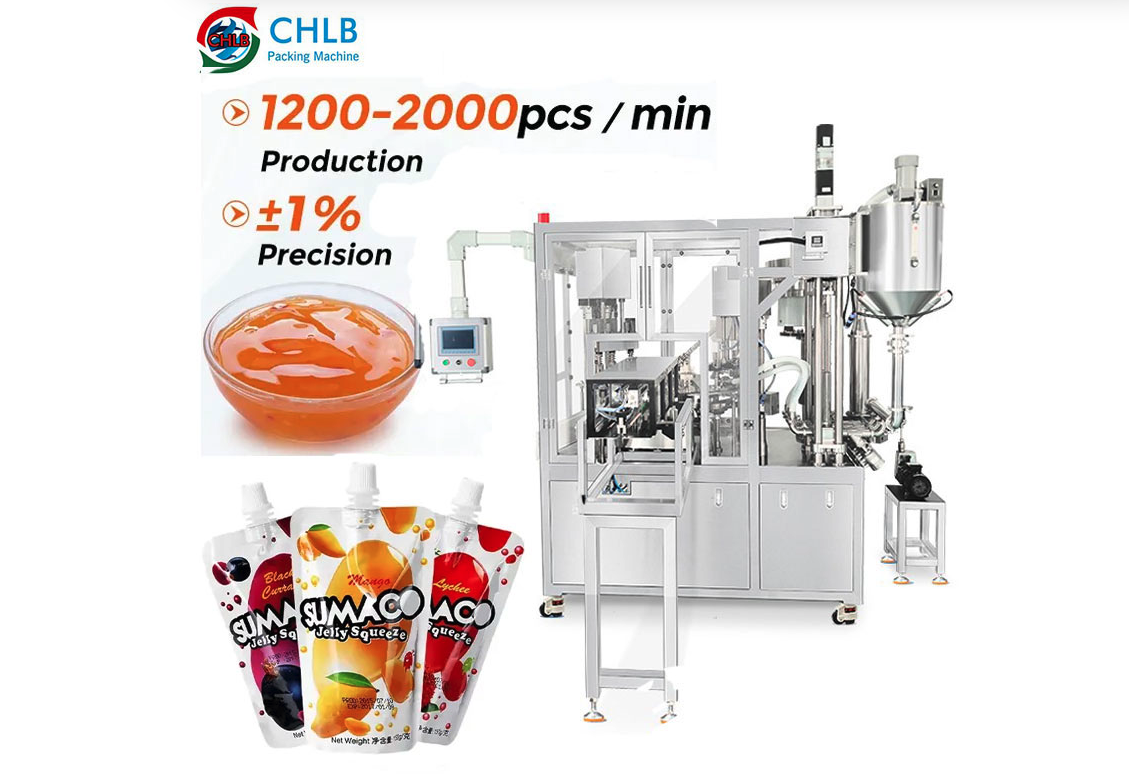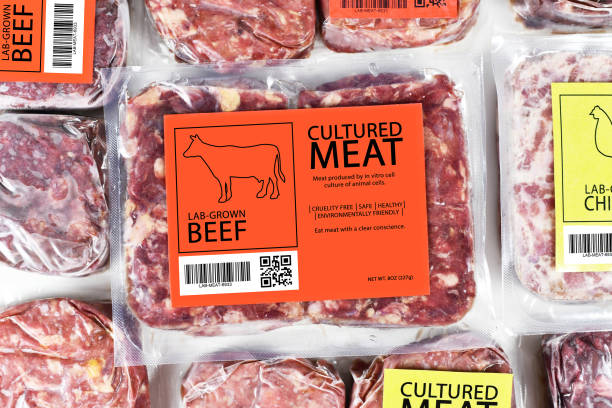Si desea que sus productos de arcilla blanda sean consistentes, alta calidad, y listo para el mercado, Una máquina de embalaje de plastilina confiable es la clave. Le ayuda a acelerar la producción mientras mantiene peso, forma, y presentación precisa. En esta guía, Aprenderás sobre los tipos de máquina principal, Cómo operarlos de manera efectiva, y soluciones a desafíos de envasado comunes.
¿Qué es una máquina de embalaje de plastilina??
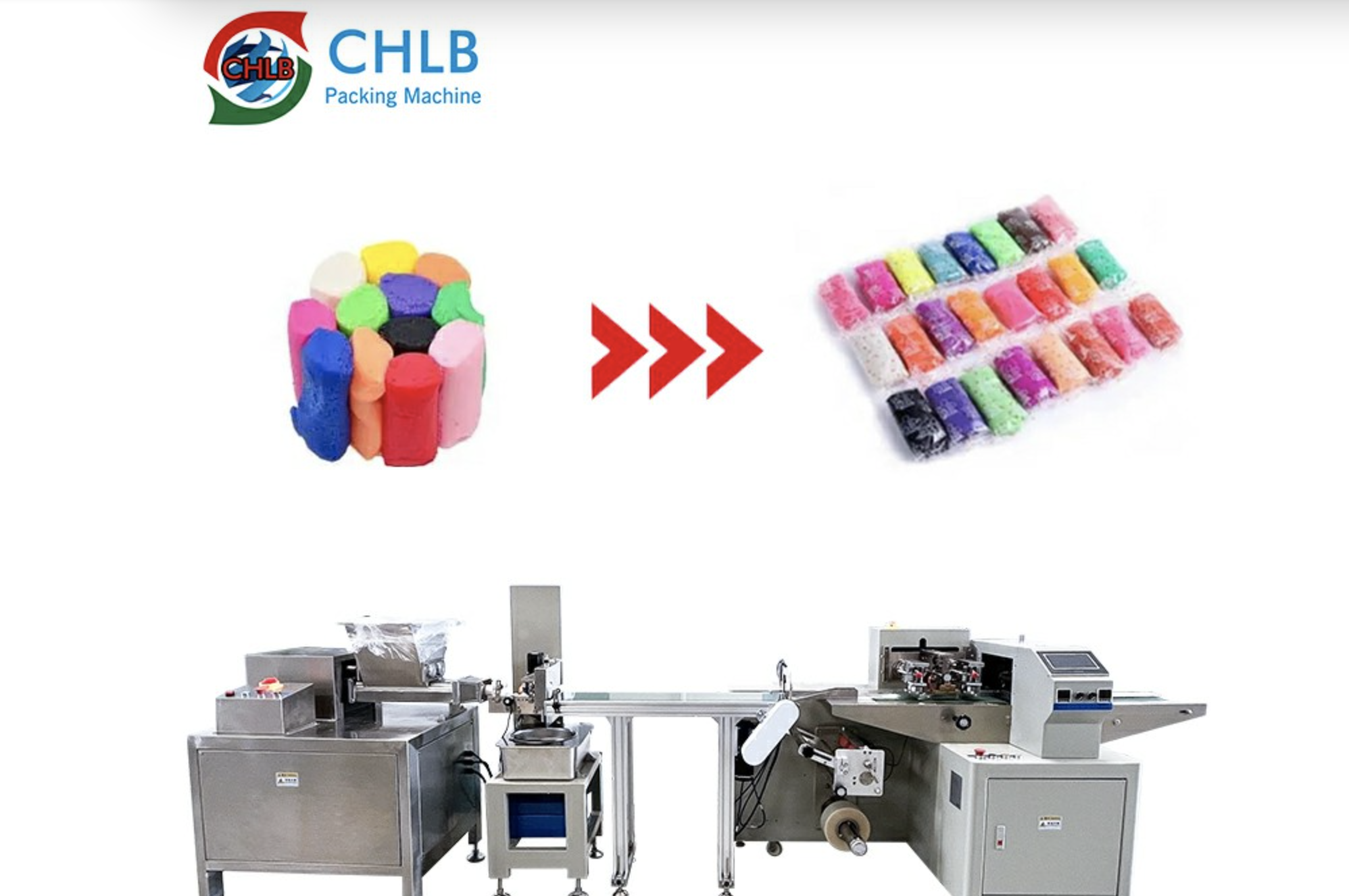
A máquina de embalaje de plastilina es una pieza dedicada de equipos industriales. Está diseñado para medir automáticamente, parte, y empacar productos de arcilla de modelado suave en bolsas, bandejas, o cajas con peso y forma precisos. Este tipo de máquina está construido para pegajoso, materiales deformables con los que luchan los sistemas de embalaje ordinarios.
En lugar de simplemente sellar un producto, Mantiene la forma de la arcilla intacta mientras evita los residuos en las piezas de contacto. Topadoras antiadherentes, sistemas de dosificación de baja presión, y las temperaturas de sellado controladas funcionan juntas para evitar el manchado, contaminación cruzada, y falla del sello. Estos son problemas que las máquinas de embalaje comunes no pueden manejar bien.
Si es un fabricante o distribuidor, Esto significa que puede ejecutar conjuntos de arcilla multicolor con un tiempo de cambio mínimo, Mantenga la tolerancia de peso dentro de ± 1–2 g incluso en productos de alta viscosidad, y aún así lograr limpio, sellos a prueba de manipulaciones. En la práctica, Una máquina de embalaje de plastilina le permite empaquetar un material desafiante rápidamente, sin peligro, y a un estándar minorista que las máquinas genéricas rara vez logran.
Tipos de máquinas de embalaje de plastilina
Las máquinas de embalaje de plastilina se pueden agrupar de acuerdo con el formato final del producto. Este enfoque le ayuda a identificar rápidamente qué máquina se ajusta a sus necesidades de producción y mercado.. Los tipos principales son el palo/barra, bloquear, Copa/lata de llenado, y paquete múltiple/set.
Palo / Tipo de barra
Definición: Stick o barcas de máquinas de tipo bar Aqueado en palitos o barras individuales, cada uno con una forma y peso consistentes.
Características: Estas máquinas están diseñadas para la velocidad y la precisión.. Utilizan componentes de dosificación de precisión y antiadherentes para evitar la deformación o el manchado. Dependiendo del modelo, Pueden producir 150–300 palos por minuto mientras mantienen peso dentro de ± 1–2 gramos.
Aplicaciones: Las máquinas de palo son ideales para conjuntos minoristas, surtidos de color, o kits educativos donde una presentación ordenada es esencial. Hacen ensamblaje en conjuntos multicolores simples y eficientes, ahorrar tiempo al tiempo que garantiza la calidad.
Tipo de bloque
Definición: Las máquinas de tipo bloque producen porciones rectangulares o cuadradas más grandes de arcilla, Perfecto para el embalaje a granel.
Características: Estas máquinas se manejan más pesadas, porciones de arcilla más deformables. Mantienen un tamaño y peso consistentes utilizando sistemas de dosificación de baja presión o cavidad. La salida es más lenta que las máquinas de palo, Por lo general, 50-120 bloques por minuto, Pero el enfoque está en la integridad de la forma y la capacidad de apilamiento.
Aplicaciones: Los bloques son populares en los estudios de arte, paquetes escolares, y conjuntos de recarga. Su forma rectangular uniforme hace que el almacenamiento, envío, y apilar más fácilmente para los fabricantes y distribuidores.
Taza / Puede el tipo de llenado
Definición: Taza o Máquinas de llenado puede depositar arcilla en las bañeras, tazas, o latas, a menudo con tapas resellables para preservar el producto.
Características: Estas máquinas trabajan suavemente para evitar dañar la superficie de la arcilla y garantizar incluso llenar cada contenedor. Los sistemas de sellado evitan fugas y mantienen la higiene. La velocidad de producción varía desde 20 a 60 tazas por minuto, ofreciendo un equilibrio entre calidad y eficiencia.
Aplicaciones: Ideal para productos de arcilla premium, conjuntos multicolores, o contenedores reutilizables. Este tipo también se prefiere cuando la frescura, retención de humedad, y la apariencia del producto es importante para mantener la reputación de la marca.
Múltiplo / Establecer el tipo de embalaje
Definición: Las máquinas de múltiples paquetes agrupan múltiples unidades de arcilla: palos, bloques, o tazas, en un solo paquete minorista o set.
Características: Estas máquinas integran el conteo, alineación, y funciones de envasado externo. Mantienen una disposición y presentación consistentes de cada conjunto, mientras reduce el trabajo manual. La salida generalmente alcanza los 30-100 paquetes por minuto, dependiendo del tamaño y el número de unidades internas.
Aplicaciones: Las máquinas de múltiples paquetes se usan ampliamente para juegos de regalos, kits educativos, y surtidos multicolores. Facilitan ajustar las configuraciones y ensamblar conjuntos de manera eficiente sin reorganizar la línea.
Cómo operar máquinas de embalaje de plastilina
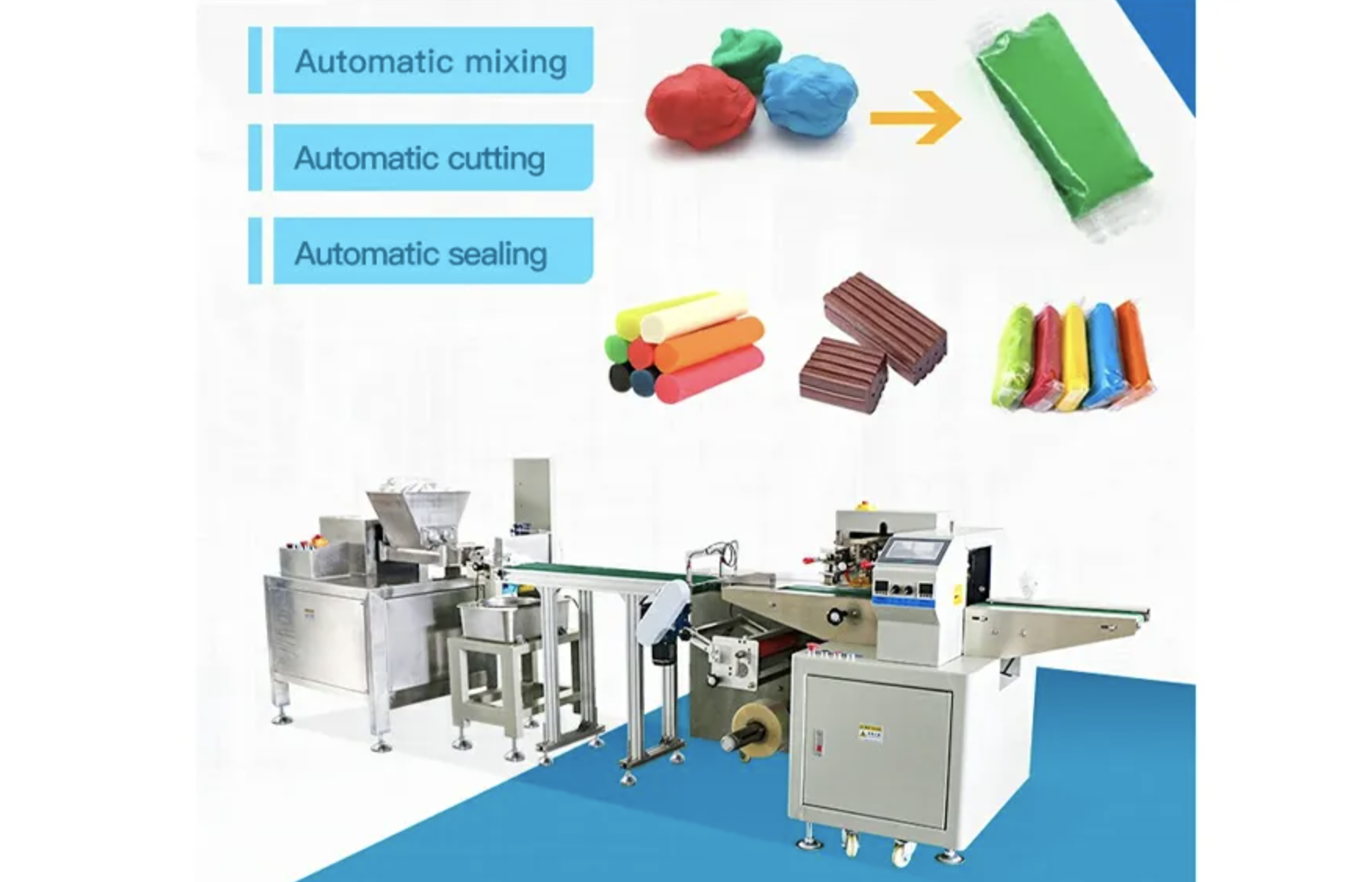
Paso 1: Preparar materiales y máquina
Antes de comenzar, Asegúrate de que tu arcilla esté suave, uniforme, y libre de trozos duros o escombros. La consistencia desigual puede causar obstrucciones o porciones desiguales.
Revise la máquina con cuidado: Limpia todas las partes que tocan la arcilla, inspeccionar el tornillo, pistón, raspador, y transportador para el movimiento suave, y confirme que el poder, presión de aire, y otras empresas de servicios públicos cumplen con los requisitos de la máquina.
Prepare sus materiales de embalaje: film, tazas, latas, o cajas, según el sistema de alimentación de la máquina. La preparación adecuada lo ayuda a evitar el tiempo de inactividad y garantiza una primera ejecución suave.
⚠️ Consejo: Para arcilla de grado alimenticio o de grado de juguete, La higiene es crucial. Mantenga siempre una superficie limpia para evitar la contaminación.
Paso 2: Establecer parámetros de la máquina
Ajuste la máquina para que coincida con las especificaciones de su producto. Establezca el peso o la longitud para cada paquete, por ejemplo, 20 g por palo o 50 g por bloque.
Controlar la velocidad de producción para que la salida coincida con su capacidad de línea. Si usa sellado de calor, Ajuste la temperatura y el tiempo de permanencia para garantizar sellos apretados sin dañar la arcilla. Para tipos de palo o barra, Establezca la extrusión o la longitud de corte con precisión.
⚠️ Consejo: Las diferentes viscosidades o firmeza de arcilla pueden requerir pequeños ajustes. Sin ellos, Podías ver palos rotos, deformación de bloque, o sellos débiles.
Paso 3: Empiece a alimentarse y correr
Cargue la arcilla en la tolva o el puerto de alimentación, luego comienza la máquina. Observe la salida inicial de cerca: verificar el peso, forma, y calidad de sello.
Una vez que todo se ve correcto, Puedes ejecutar la producción continua. La máquina se portará automáticamente, cortar, envoltura, y sellar cada unidad.
💡 Para la punta: Comience con un pequeño lote para verificar los parámetros. Una vez confirmado, Escala hasta la producción completa para una calidad consistente.
Paso 4: Ajustes y mantenimiento a mitad de carrera
Si nota cuestiones como longitudes inconsistentes, Variaciones de peso, o problemas de sellado, Pausa la máquina y ajuste los parámetros relevantes.
Al cambiar los colores o los tipos de arcilla, Limpia el tornillo, pistón, raspador, y herramientas de corte para evitar la contaminación cruzada. Lubrique las piezas móviles regularmente con la grasa recomendada de grado alimenticio para mantener todo funcionando sin problemas.
⚠️ Consejo: Los controles menores frecuentes durante la producción te ahorran de problemas más grandes más tarde.
Paso 5: Limpieza e inspección de postproducción
Después de terminar, Detén la máquina y retire todo arcilla de la tolva, tornillo, pistón, y raspadores. Limpiar todas las superficies a fondo.
Inspeccione los componentes de desgaste o daños y reemplace las piezas si es necesario. Finalmente, Limpie el área de trabajo circundante para garantizar que el próximo lote cumpla con los estándares de higiene y seguridad.
💡 Para la punta: Manteniendo las mandíbulas de sellado de repuesto, Tiras de teflón, y los sensores en la mano evitan un tiempo de inactividad largo si una parte falla. El mantenimiento preventivo regular mantiene su línea funcionando de manera eficiente.
Desafíos y soluciones de embalaje de arcilla suave
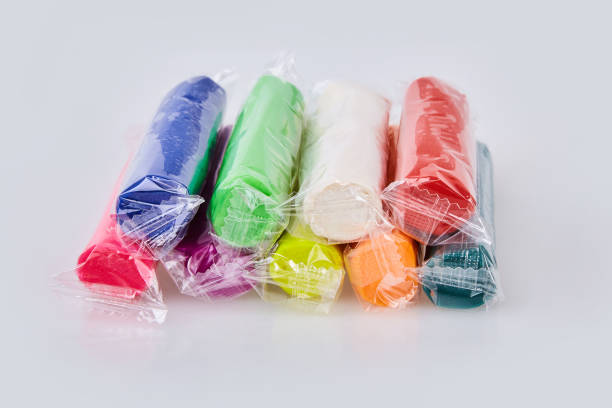
La alta viscosidad causa problemas de alimentación
La arcilla suave tiene una alta pegajosidad, lo que hace que se adhiera a los tornillos, pistones, y raspadores. Esto puede causar bloqueos frecuentes, alimentación desigual, o porción inexacta. Si el material no se mueve suavemente, Es posible que vea paquetes rechazados o ralentizaciones de producción.
Soluciones: Usar un transportador de tornillo o bomba de pistón para proporcionar consistente, alimentación controlada. Incorporar placas o raspadores para evitar la acumulación de material. Ajuste la velocidad de alimentación de acuerdo con la viscosidad de la arcilla para mantener un control de peso preciso y reducir el tiempo de inactividad. Esto asegura cada palo, bloquear, o la copa sale exactamente como se planea.
Arcilla se deforma fácilmente o pierde forma
Al correr a alta velocidad, Los palos o los bloques pueden estirarse, comprimir, o perder su forma prevista. Diferentes colores o formulaciones de arcilla tienen una dureza variable, lo que complica el mantenimiento del tamaño y la apariencia uniformes.
Soluciones: Velocidad de extrusión de ajuste fino, velocidad de corte, y longitud de la porción para mantener cada unidad consistente. Para formas más inestables, Use moldes o envases de película flexibles para proporcionar soporte durante el envoltorio. Monitoreando la salida de cerca, Puede hacer pequeños ajustes sobre la marcha y mantener su línea de producción estable.
Problemas de sellado y estabilidad de envasado
La arcilla suave puede expandirse dentro del paquete o arrugarse el material de envoltura, que puede conducir a sellos débiles o apariencia de producto comprometida. El sellado inconsistente puede provocar fugas, productos dañados, o un atractivo del estante inferior.
Soluciones: Controle cuidadosamente el calor, presión, y tiempo de permanencia en los procesos de sellado. Instale el monitoreo en tiempo real para la temperatura y la integridad del sello para capturar problemas antes de que los paquetes salgan de la línea. Este enfoque ayuda a mantener fuertes, ordenado sellos y conserva el aspecto profesional del producto.
Los cambios en el color y la limpieza son desafiantes
Cambiar los colores de arcilla a mitad de la producción es complicado porque el material sobrante puede causar contaminación cruzada. La alta pegajosidad también hace que la limpieza de la tolva, tornillo, y las herramientas de corte requieren mucho tiempo y reducen la eficiencia de producción.
Soluciones: Elija máquinas con diseños modulares para que las tolvas, tornillos, pistones, y las cuchillas se pueden quitar y limpiar rápidamente. Los componentes de cambio rápido reducen el tiempo de inactividad y le permiten cambiar de color o formulaciones de manera eficiente, Mantener sus lotes limpios y consistentes.
Mantener una calidad consistente es difícil
Lograr peso uniforme, longitud, o la forma del bloque puede ser difícil, especialmente cuando se produce grandes volúmenes. Incluso las pequeñas desviaciones en la configuración de la máquina o el manejo del operador pueden afectar la consistencia general de sus productos terminados.
Soluciones: Utilice sistemas de monitoreo automático como sensores de peso, detectores de longitud, y alarmas de fallas para rastrear la producción en tiempo real. El control de PLC de alta velocidad minimiza el error humano, Asegurar que cada unidad cumpla con sus estándares de calidad. Seleccionar el formato de embalaje correcto: Cubs, múltiples, o película compatible: también puede ayudar a mantener la forma y la apariencia al tiempo que reduce la variabilidad.
Pensamientos finales
El embalaje eficiente y preciso marca la diferencia cuando se trabaja con arcilla blanda. Con la máquina de embalaje de plastilina derecha, Puedes reducir el desperdicio, Mantener una calidad consistente, y mantén tu producción funcionando sin problemas.
En CHLB, Nos especializamos en máquinas diseñadas para la fiabilidad y facilidad de uso., Ayudándote a aprovechar al máximo cada lote. Explore nuestras soluciones hoy y vea cómo podemos apoyar su línea de producción con alto rendimiento, equipo profesional.

